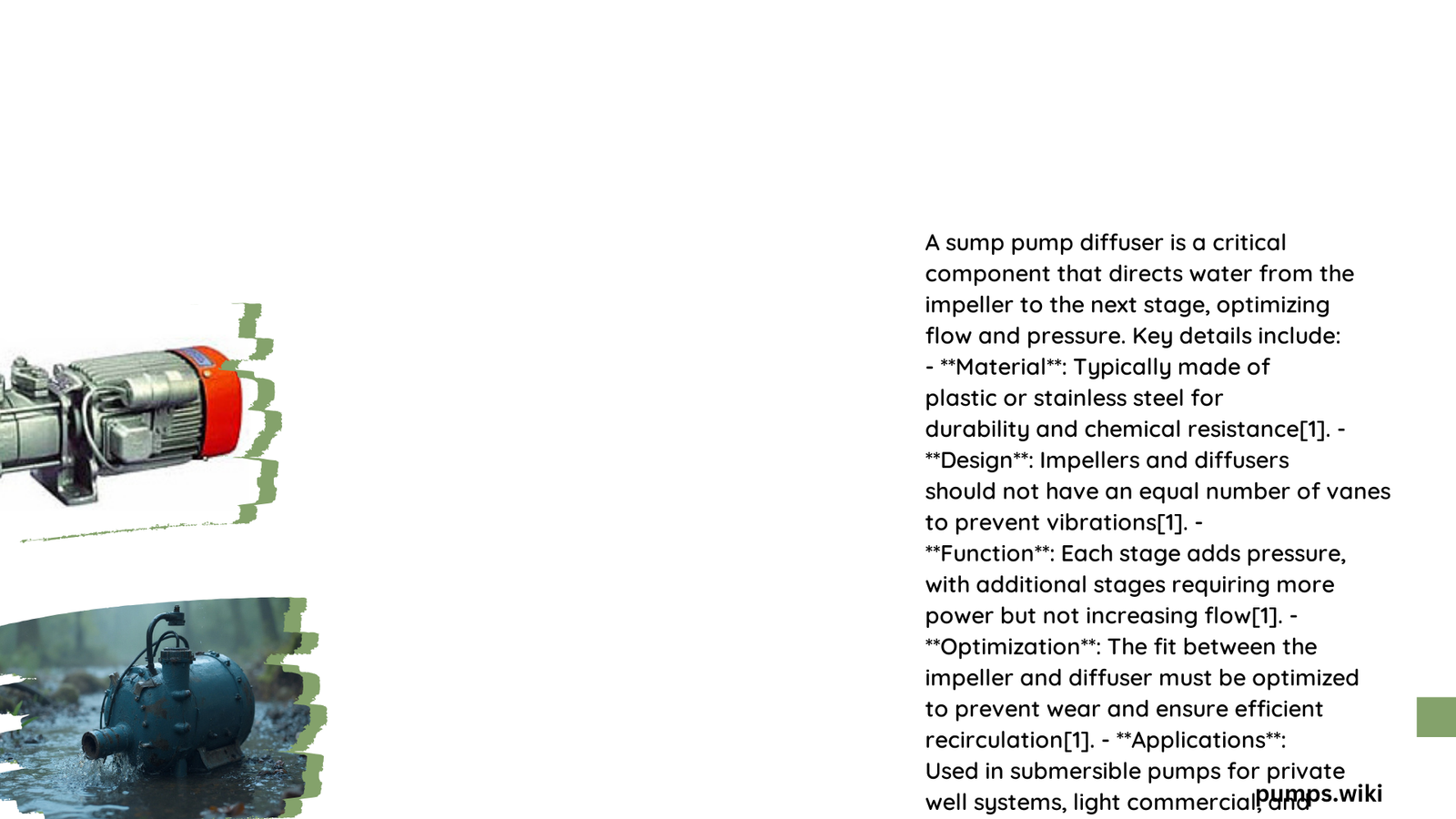A sump pump diffuser is a critical component in water management systems, designed to efficiently distribute water and reduce potential flooding risks in residential and commercial basements. By strategically dispersing water flow, these specialized devices prevent erosion, minimize sediment buildup, and enhance overall drainage performance, making them essential for protecting property infrastructure from water-related damage.
What Is a Sump Pump Diffuser?
A sump pump diffuser is an engineered attachment that helps distribute water more evenly during pump discharge, reducing turbulence and potential soil erosion. Unlike standard discharge methods, diffusers create a controlled water release mechanism that protects surrounding landscape and foundation integrity.
Why Do You Need a Sump Pump Diffuser?
| Problem | Diffuser Solution |
|---|---|
| Soil Erosion | Controlled water dispersion |
| High-Pressure Discharge | Reduced water velocity |
| Landscape Protection | Even water distribution |
| Foundation Preservation | Minimized ground saturation |
Key Components of Sump Pump Diffusers

Materials and Construction
- Typical Materials:
- High-density polyethylene
- Corrosion-resistant metals
- UV-stabilized plastics
Performance Characteristics
- Water Velocity Reduction
- Sediment Containment
- Directional Water Flow
- Minimal Maintenance Requirements
Installation Process for Sump Pump Diffusers
Preparation Steps
- Measure discharge pipe diameter
- Select appropriate diffuser model
- Gather necessary installation tools
- Verify local drainage regulations
Installation Techniques
- Remove existing discharge pipe
- Attach diffuser mechanism
- Secure connections
- Test water distribution pattern
Efficiency Metrics and Considerations
Flow Rate Optimization
- Standard diffusers handle 30-60 gallons per minute
- Adjustable designs accommodate various water volumes
- Engineered to reduce hydraulic pressure
Environmental Benefits
- Prevents ground erosion
- Reduces water runoff concentration
- Supports sustainable drainage practices
Maintenance and Troubleshooting
Regular Inspection Checklist
- Check for debris accumulation
- Verify structural integrity
- Assess water distribution pattern
- Lubricate moving components
Common Challenges
- Potential clogging
- Sediment buildup
- Mechanical wear
- Improper alignment
Selection Criteria for Sump Pump Diffusers
Evaluation Factors
- Property landscape characteristics
- Annual rainfall volume
- Soil composition
- Discharge pipe specifications
- Budget constraints
Advanced Features in Modern Diffusers
Technological Innovations
- Smart monitoring systems
- Self-cleaning mechanisms
- Adaptive flow control
- Integrated filtration elements
Cost Considerations
Price Range
- Basic models: $50-$150
- Advanced systems: $200-$500
- Professional installation: $100-$300
Professional Recommendations
Expert Tips
- Consult local drainage specialists
- Consider site-specific requirements
- Prioritize long-term performance
- Invest in quality components
Conclusion
Sump pump diffusers represent a sophisticated solution for managing water discharge, protecting property infrastructure, and maintaining environmental sustainability. By understanding their functionality and implementing proper installation techniques, homeowners can significantly enhance their water management strategies.
